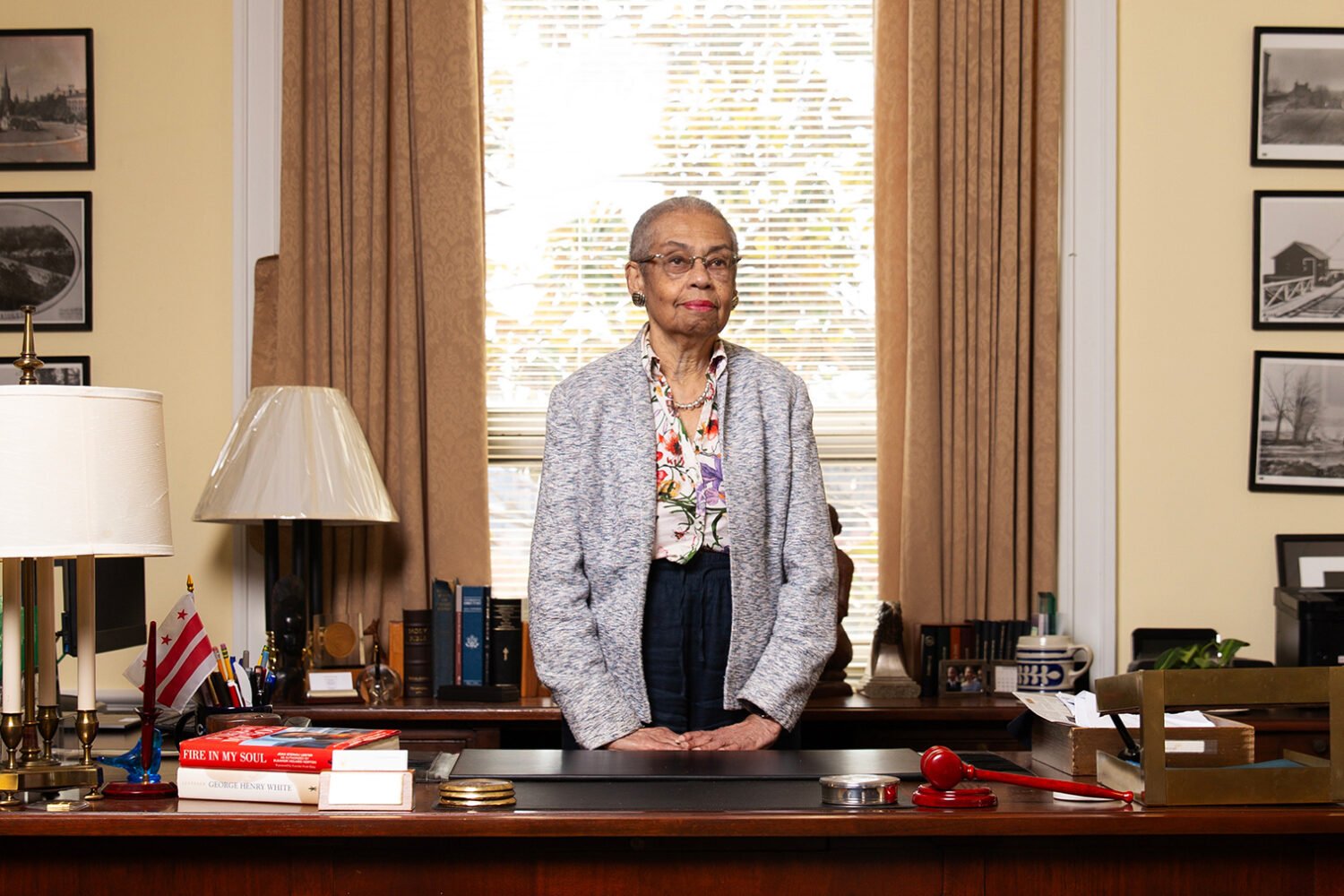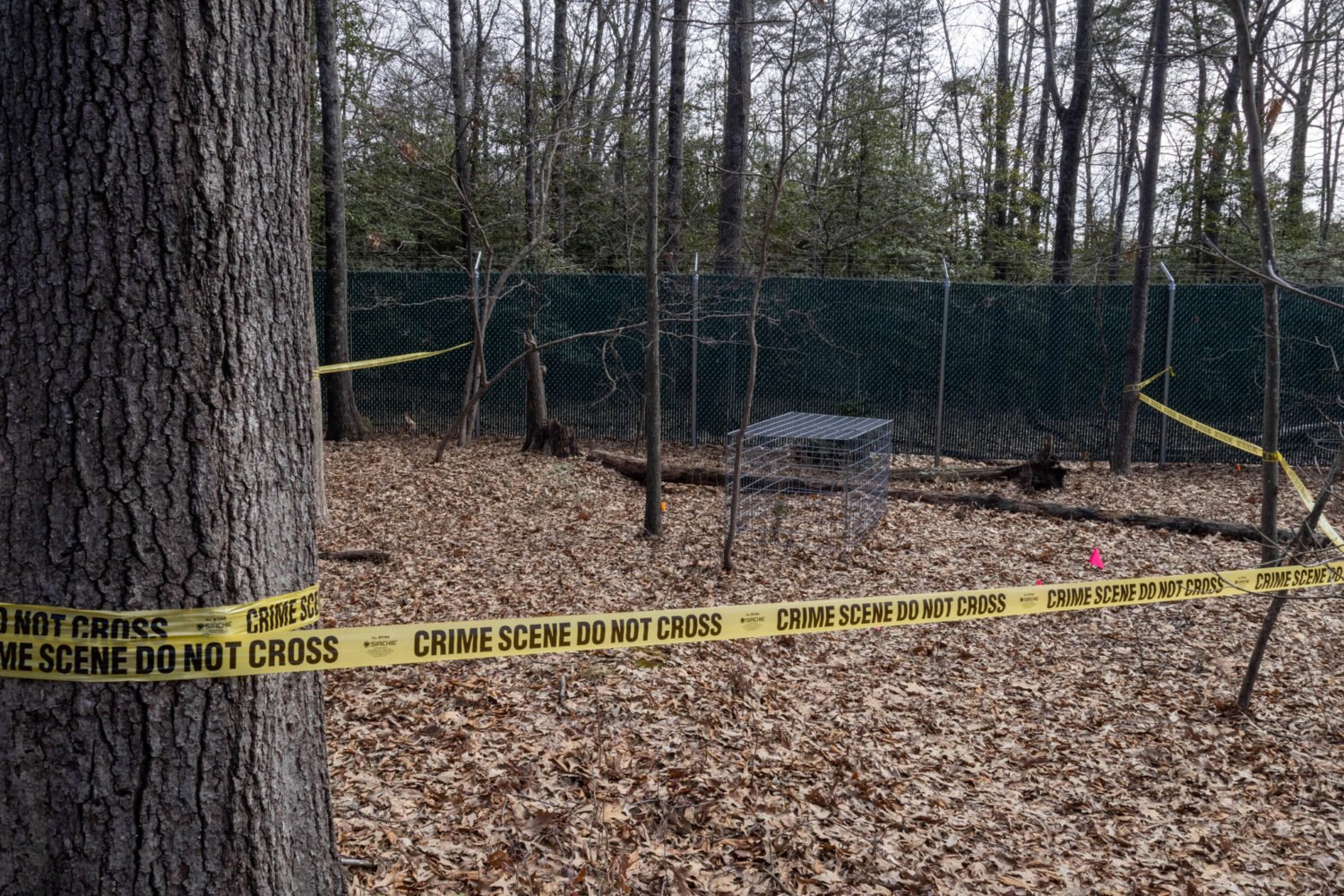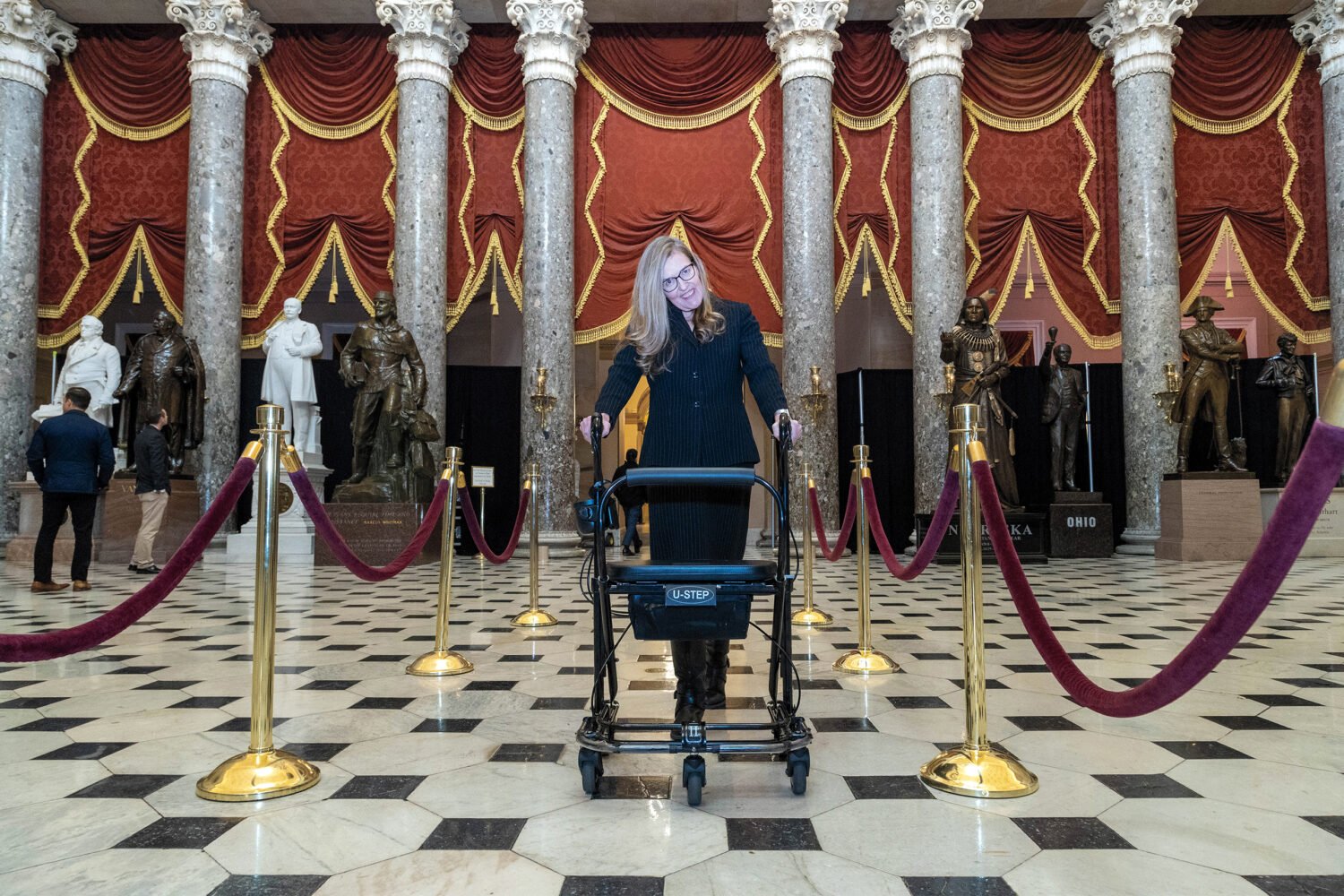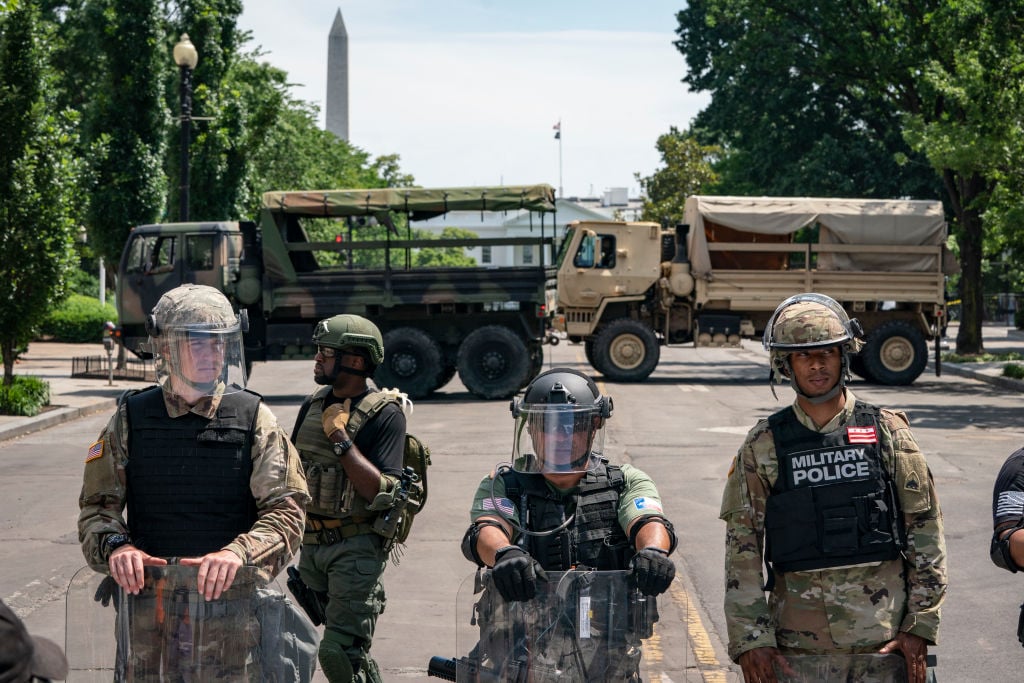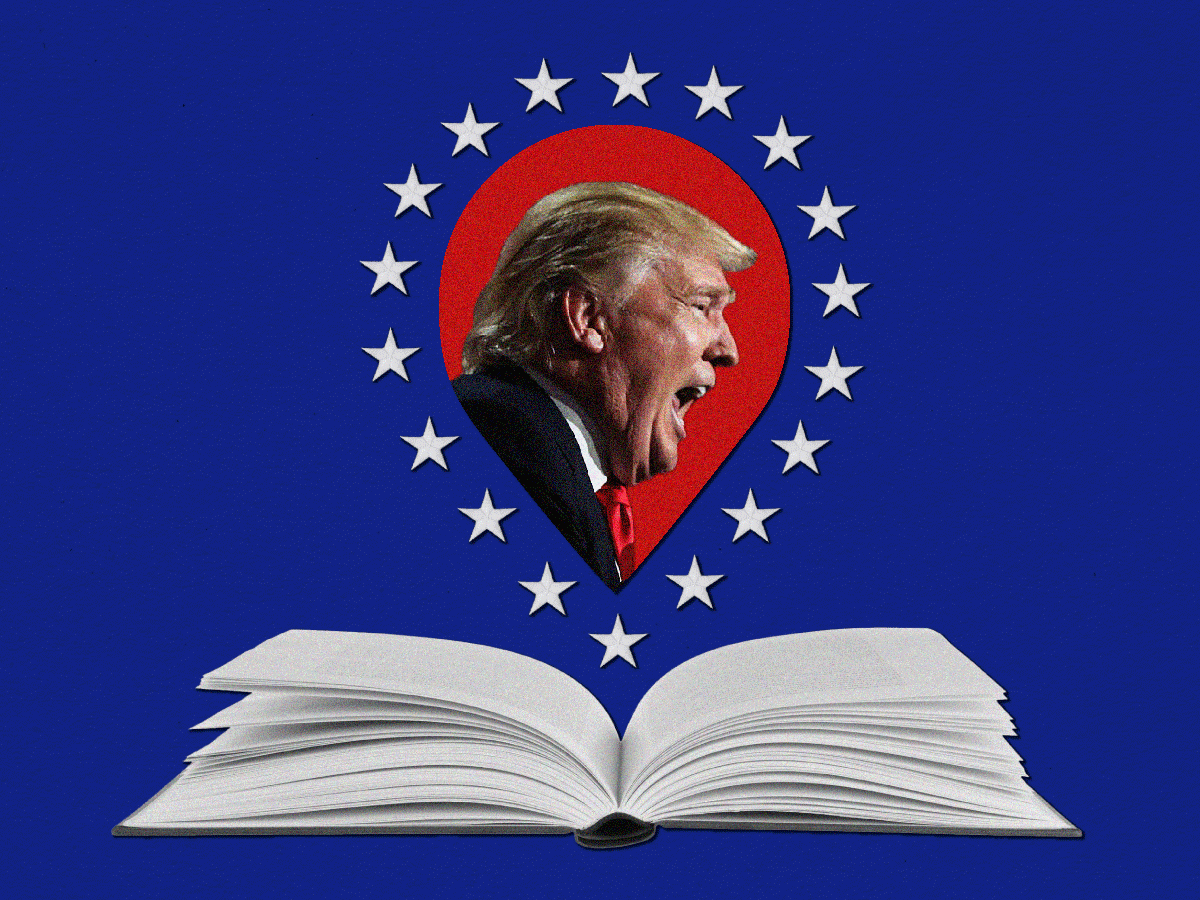The collapse begins on Capitol Hill. In 2018, Congress’s failure to pass a budget leads to a 10-percent cut in federal discretionary spending in the Washington area. Contracting firms begin layoffs. The newly unemployed stop taking their clothes to the dry cleaner’s, dine out less often, and stop buying homes. With fewer customers, clothing boutiques and cocktail bars trim staff or shut down. As the dysfunction in Congress drags on, the government eliminates some 30,000 federal employees and contractors. The unemployment rate doubles. Spin studios in Bethesda go under, artisanal grocery stores in Dupont Circle close. New construction grinds to a halt; developers walk away from half-finished projects. Flowers at building entrances shrivel and die.
Lower tax receipts from declining property values force local governments to slash social services. School funding plummets just as more parents move their children from private academies to the public system. Young workers flee to faster-growing cities like Boston and Seattle. The nation’s capital is plunged into a deep recession with no end in sight.
It’s a nightmare scenario, sure. But it’s one that Professor Stephen Fuller, the area’s most influential voice on such matters, considers dangerously realistic. Which is why, on a Wednesday morning in October, he stands at a podium before a crowd of local government officials, bankers, and developers in an auditorium on George Mason University’s Arlington campus. For nearly half an hour, he clicks through a presentation of trend lines moving in the wrong direction, bar graphs dipping negative, and Washington plummeting to the bottom of big-city rankings—much of it triggered by the federal spending cuts, including those known as sequestration.
“Boston is almost three times our growth rate. Atlanta, Houston, Seattle around four times. And Dallas more than five times,” Fuller tells the audience. “The reason we have been struggling is obvious: We are a company town, and our company stopped spending more money here.”
At 77, Fuller—a professor at GMU’s Schar School of Policy and Government—has been studying the region’s economy for nearly a half century. He once told a reporter he’s a glass-half-full person who tries to “provide some balance” to the pessimism endemic to his profession. (There’s a reason it’s known as the dismal science.) His reputation for upbeat forecasts is so pervasive that someone once told Fuller he discounted his projections by 10 percent to make them more realistic. But in recent years, the dean of Washington’s regional economists has grown uncharacteristically dark.
Don’t be fooled, Fuller says, by the trappings of prosperity—the construction cranes cluttering skylines all around the Beltway, the soaring housing prices, the proliferation of pop-up bars and tasting menus. Beneath the surface lie markers of impending decay. Since 2010, when budget cuts ended a 30-year run of explosive federal procurement-spending growth, the area has lost high-paying jobs tied to the government and replaced them with positions in less lucrative fields—exotic-cocktail mixologists, child-care workers—impaling the wealth-creating engine that transformed Washington from a sleepy federal city to a dynamic world capital. Fuller says this structural change in the economy is the most dramatic since the end of World War II. And while in years past the Washington area consistently outpaced national benchmarks, he now sees an economy defined by middle-of-the-road growth and, especially in the era of Donald Trump, troubling risks to the downside. If local leaders can’t find a way to wean the region off its dependence on Uncle Sam, he warns, Washington could begin looking less like the vibrant, cosmopolitan hub it is and more like the provincial administrative outpost its original architects envisioned.
Such ominous views have placed Fuller at odds with some of his longtime fans in the business community, who consider his warnings overblown. But the professor believes the economy’s challenges are so serious that, last January, he put off retirement and began running a new, privately funded academic center at George Mason: the Stephen S. Fuller Institute for Research on the Washington Region’s Economic Future.
Our economy, he says, “is like a family that’s been living off of inheritance, and they’ve lived well all their lives. But the funds are running out, and they don’t quite know it.”
As the seat of the federal government, Washington has always enjoyed economic advantages. As the government mobilized to prepare for World War I, Uncle Sam became the city’s largest employer. At its peak in 1980, the area was home to more than 370,000 federal jobs. They came with comfortable salaries, formed the backbone of a thriving middle class, and fueled the region’s expansion into Virginia and the Maryland suburbs. Because the feds didn’t lay people off when the national unemployment rate jumped, locals began to think of the region as “recession-proof.”
Things changed with Ronald Reagan’s election, as the right-wing crusade to shrink government ended the growth of federal payrolls. Today Washington has about as many federal employees as it did during the Carter administration. But Reagan didn’t stop the expansion of the federal workforce—he simply disguised it. Officials began hiring outside contractors for jobs that had previously been handled by bureaucrats. This created a brand-new industry that would redefine how the government functioned and the region evolved. From 1980 to 2000, annual federal spending on contractors surged by a factor of seven, and over the following decade, it nearly tripled again. By 2010, the area was home to roughly a half million federal contractors, soaking up nearly $82 billion a year in spending.
This deluge of cash created the Washington region you see today. Back in 1950, the area was the country’s ninth-largest metropolitan economy; by 2010, only Chicago, Los Angeles, and New York were bigger. Tysons was primarily cows and farmland as recently as the 1960s. But the contractors who established headquarters there turned it into America’s 12th-largest employment center by 2008. Such phenomenal growth only furthered the perception that Washington was immune to slumps.
Fuller’s career flourished alongside the region, and he joined the faculty of George Mason in the mid 1990s. He assembled data about local building permits, unemployment, and retail sales to create Washington’s first-ever index of leading economic indicators. He was hired to analyze the impact of what’s now FedExField, new high-occupancy tolls on the Beltway, and Metro’s Silver Line. He even served as an expert witness for the state of Virginia in its prosecution of convicted DC sniper John Allen Muhammad, who was charged with, among other things, economic terrorism.
Along the way, Fuller became a sound-bite-ready source for business reporters and a regular speaker at chamber-of-commerce luncheons. His enthusiasm about the area’s economy verged on breathless. “It is hard to find another economy in the world that matches what is happening here,” he said in 2004. “It is difficult to find other economies like this, looking through history.”
This optimistic view, Fuller says, was simply a reflection of the data. “We were leading the country in growth,” he tells me. “I wasn’t inventing the news.” Though he questioned the idea that the region’s economy was recession-proof, as some believed, he did think it was “recession-cushioned.” Because federal spending isn’t tied to broader business cycles, it could serve as a moderating force during downturns. This was particularly evident during the Great Recession, when the national unemployment rate hit double digits but local joblessness never surpassed 7 percent. The relative strength of the job market brought a flood of well-educated millennials into the area. Many landed high-paying jobs. They helped revitalize neglected neighborhoods, bankrolled a renaissance of food and drink, and appeared poised to power the next generation of economic growth. Aided by a few high-profile firms such as Capital One and Discovery Communications, Washington had flattered itself that its dynamic economy was no longer tied to boring old Uncle Sam.
The party seemed as if it would last indefinitely. Only a few—Fuller among them—realized that the music was about to stop.
In the summer of 2011, after a partisan knife fight over the government’s finances, Democratic and Republican lawmakers reached a last-minute deal to avoid a default. The Budget Control Act of 2011 lifted the federal-debt ceiling, allowing the Treasury to continue paying its bills while also implementing hundreds of billions of dollars in spending restrictions. Two years later, after Congress couldn’t agree on a bipartisan solution, the legislation triggered an additional $1.2 trillion of automatic cuts, known as sequestration.
Before the cuts, Fuller believed the biggest challenge the region faced was ensuring that it had enough housing and transportation infrastructure to handle a surging population. But as he studied the effects of the budget-tightening legislation, he came to believe that the foundation of Washington’s long economic expansion was crumbling before his eyes.
One of Fuller’s biggest insights was detailing the connection between the government-contracting industry and the region’s overall vitality. In 2001, he completed a regression analysis showing a 95-percent correlation between the growth of federal procurement spending and the growth of Washington’s economy. As the area expanded, he found, it was only becoming more reliant on Uncle Sam. “But it appeared to everybody that we were becoming less dependent because with the growth of the private contractors it didn’t look like the federal government was growing,” he says. “Yet every office building you see in Crystal City is full of federal contractors.”
During sequestration—which resulted in a roughly 10-percent reduction in federal spending in the area—Uncle Sam cut thousands of government jobs and, more important, slashed procurement spending by 15 percent. It was enough to shrink the region’s economy just as the rest of the country was emerging from the recession. For years, Washington had been the envy of big-city mayors, but in 2014 it had the slowest-growing job market of the US’s 15 largest metropolitan areas. Since 2010, our region has ranked dead last in per-capita personal-income growth and worst in overall economic growth.
With the national debt surpassing $20 trillion, federal spending is unlikely to return to 2010 levels anytime soon, says budget guru Stan Collender. Instead, he believes, partisan bickering will ensure that fiscal standoffs—leading, in some cases, to government shutdowns—become a regular feature of the legislative calendar. This unpredictability has already made the region less attractive to capital. On account of the stable flow of federal dollars, Washington in the early 2000s was one of the world’s top destinations for foreign real-estate investors, according to an annual survey by the industry’s trade association. By 2014, however, it had dropped to 15th.
“When you have uncertainty, people are frozen—nobody’s committing for the long term,” says Amer Hammour, chairman of Madison Marquette, a real-estate firm that invests in projects throughout the country, including the redevelopment of the Southwest waterfront.
Of additional concern to Fuller is the unfavorable employment mix. As the region loses high-paying jobs linked to the government—a federal contractor is worth about $158,000 to the economy—it’s replacing them with positions in fields like education, health, and hospitality, which add only about $63,000 per worker. Even though the raw number of jobs in the area is growing, it takes almost three new MRI technicians to replace the economic value of one laid-off contractor. In 2015, Fuller wrote a report identifying seven sectors—such as science and security technology, biological and health technology, and advocacy—where Washington has the potential to increase the number of lucrative new jobs to make up for those lost to budget tightening. But since then, regional job growth in these same industries has underperformed the nation by half. “And measuring them against the US average,” Fuller says, “isn’t a high bar.”
Looming over all this is a crisis in the region’s affordable-housing market. After the 2008 financial meltdown, developers were unable to get loans to build new condominiums. At the same time, older Washingtonians delayed retirement and stayed in their homes, according to Sam Khater, deputy chief economist at CoreLogic. This led to an inventory squeeze that pushed real-estate prices back near their housing-boom peaks. Apartment rental costs in the area are now second-highest in the nation, above even New York City’s. As workers journey farther outside DC in search of cheaper housing, area commuters now spend 61 hours a year stuck in traffic—making Washington, according to the data firm Inrix, the world’s 15th-most congested city.
Back in 1990, Washington was home to nearly 1.6 million baby boomers—they got married, bought homes, and raised families here. A full quarter century later, 91 percent of the region’s boomer population remained. It’s unclear, however, if the millennials who flocked here during the Great Recession will do the same. Already burdened with student-loan debt, many young workers have concluded that the area’s frustrating commutes and high living costs make raising a family impossible.
“They just can’t see how to do it,” says Dawn Leijon, an executive in residence at American University’s Kogod School of Business, who studies millennials in the area. From 2014 to 2016, Washington’s population of 25-to-34-year-olds declined, while other major metropolitan areas saw increases. If Washington can’t retain these highly educated young people, it won’t have enough juice to drive the economy forward.
Three years ago, Fuller received funding from 13 different businesses and trade groups to analyze the trends more thoroughly. The result was a 41-page report that detailed the ominous data, described the urgent need to diversify the economy away from the feds, and outlined the forward-looking industries that are ripe for expansion in the region. Even if his prior warnings were dismissed, the report was impossible to ignore. “It was game-changing,” says Robert Buchanan, a real-estate developer who also runs the 2030 Group, a regional trade association that helped finance the project.
Nevertheless, many in the business community have resisted Fuller’s gloomy talk—with some justification. Washington has recovered from the post-sequester recession and is once again expanding, its population is growing (if at half its previous rate), and it has added more than 150,000 jobs since 2015. “Complaining about the economy right now,” says Jim Dinegar, the recently departed head of the Greater Washington Board of Trade, “is like complaining about a dent in your Mercedes.”
The importance of federal spending to the area’s health is undeniable. But when it comes to human capital, Washington has plenty of other assets. It’s home to America’s most highly educated workforce as well as world-class universities and excellent hospitals. The region’s economy, meanwhile, has diversified considerably in recent years. Back in 2010, federal spending represented 40 percent of the area’s economy; today, it’s closer to 30 percent. Besides, any number of factors—another 9/11-scale crisis, say, or a liberal backlash to conservatives’ current dominance—could usher in a new era of big government.
“I don’t care what people say—they can talk till they’re blue in the face,” says developer Jim Abdo. “We may have years where we have robust job growth to the 40 or 50 thousands, but under a worst-case scenario, we are still going to continue to have job growth.”
Fuller says these leaders are in denial. He believes it’s simply too risky to assume that the region’s traditional strengths will overcome the structural changes taking place in the economy. Given the bitter partisanship on Capitol Hill and the Trump administration’s talk of dismantling the “administrative state,” the immediate future will almost surely involve more restrained spending. “I was told I was way too optimistic in past years,” he tells me. “Now they call me Dr. Doom.”
What might that future look like? For the bulk of its history, Washington was an administrative capital that offered jobs to bureaucrats—nearly 40 percent of area residents were once federal employees—but little else. “This was a place you came to do business and you left,” Fuller says. “There were no bright lights here.” It was only after the broad economic expansion of the postwar years, followed by the surge in federal spending, that many of today’s familiar cultural amenities appeared. Now if government continues to pull back and local leaders can’t increase new high-paying jobs, Fuller predicts Washington will begin to revert to its pre-boom form. Should that trend play out over the long term, the nation’s capital will look a lot less like Paris and a lot more like Brasilia.
“If somebody turns [the lights] off, what do we have?” Fuller says. “We just have government and a little bit of tourism and the people who serve that. The rest of it is going to disappear.”
Such concerns were far from mind on a chilly day this past October, when hundreds of spectators gathered on a pier along the Potomac River for the grand opening of the Wharf, the enormous redevelopment of the District’s Southwest waterfront. By the time it’s finished, the project—built on a previously deserted corner of the city—will feature 14 residential and office buildings along a mile-long stretch of the Potomac. Residents will be able to visit more than 30 bars and restaurants, peruse a collection of boutiques, watch a show at a 6,000-seat concert venue, and even take the water taxi across the river to East Potomac Golf Course.
Eastern High School’s marching band performed along the pier, and entertainers on stilts bounded through the crowd. Executives at PN Hoffman, the firm that developed the property, welcomed local dignitaries onstage, and DC’s nonvoting congressional delegate, Eleanor Holmes Norton, called the project “something of a miracle.” When the speakers had finished, fireworks exploded against the overcast sky.
You can’t help but marvel at the scope of the achievement. But if Washington’s nightmare scenario comes to pass, the restaurants will eventually close and the offices will empty. And the $2.5-billion project will endure only as a monument to an economy that no longer exists.
This article appears in the January 2018 issue of Washingtonian.

![Luke 008[2]-1 - Washingtonian](https://www.washingtonian.com/wp-content/uploads/2017/10/Luke-0082-1-e1509126354184.jpg)
